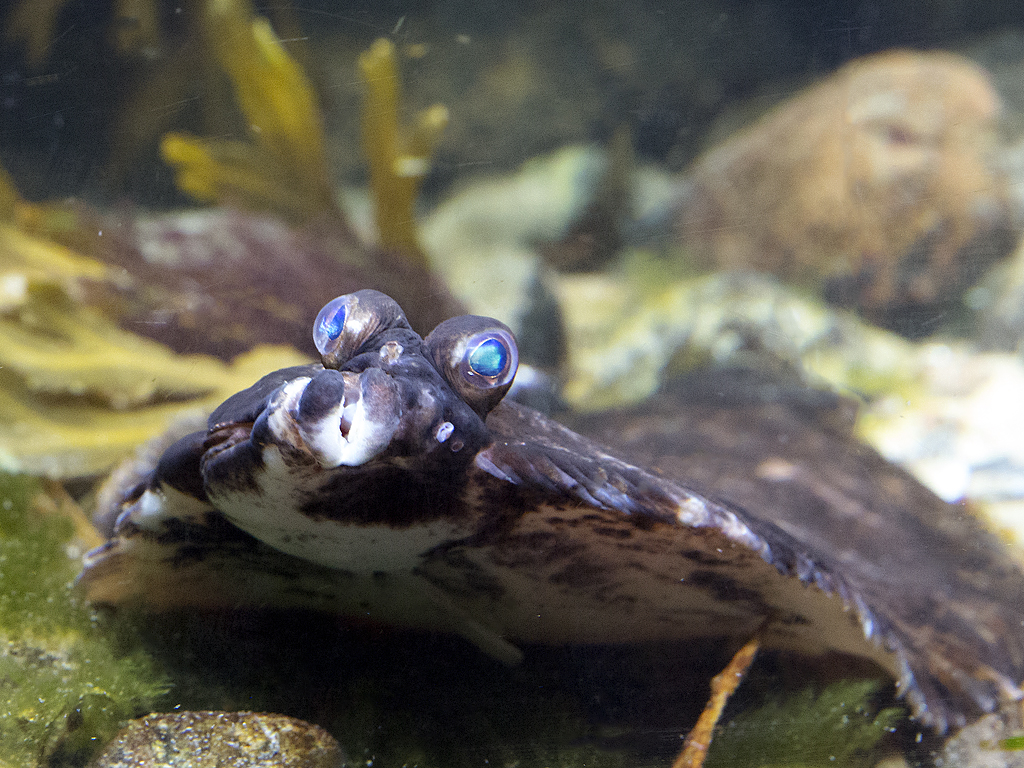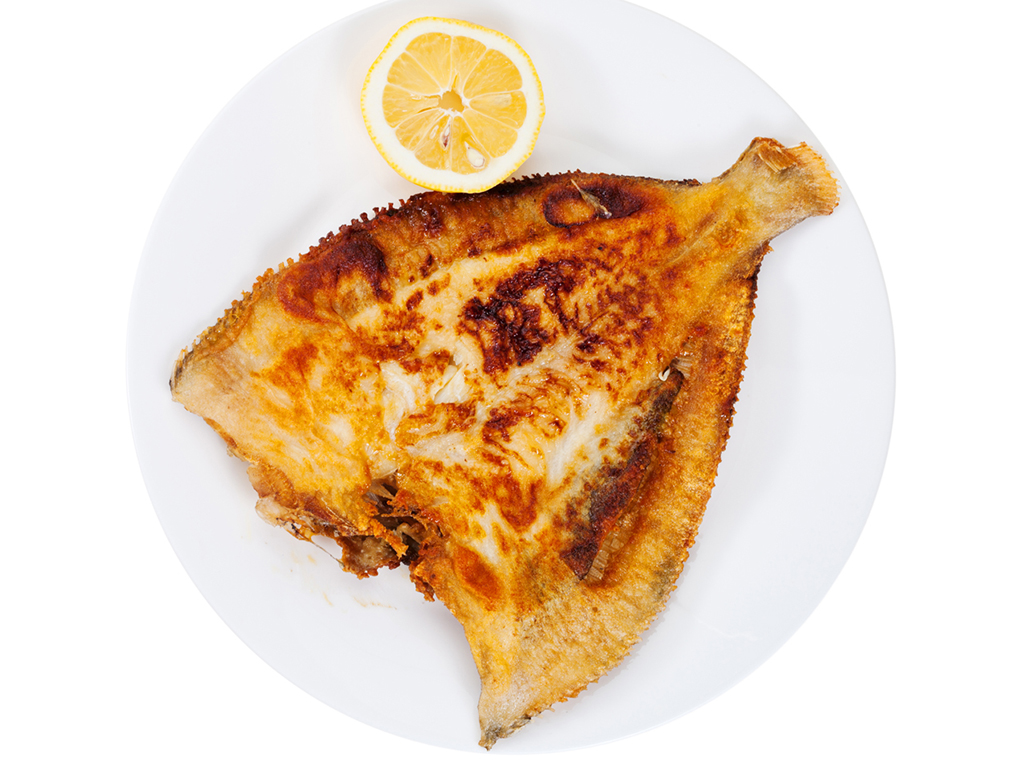European plaice
Pleuronectes platessa

The eye moves to the other side
Have you ever stepped on or seen small flatfish on the bottom when you go swimming in the sea in the summer? Those are often young plaice that quickly swim away. Older specimens live in deeper water.
When a plaice hatches from its egg, it looks like a miniature version of a “normal fish” – with one eye on each side of its head. When the plaice has grown somewhat a transformation occurs and one eye “migrates” across to the other side. After that the plaice lives on the bottom. The European plaice is characterised by its red spots.

Photo: Johanna-Rylander-Malmö-Museer
Regulated fishing
Plaice are disappearing because the oceans were polluted and overfertilised 30 to 40 years ago. But the oceans are now in better condition and plaice in the North Sea are slowly increasing in number.
Many fishermen catch plaice because many people like to eat it. That is why it can only be fished during certain periods of the year.

Distribution in Sweden

Bohuslän to the Stockholm archipelago. Rare farther north in the Baltic Sea.
White marking = Distribution
Threat based on the Red List

Trade regulations
CITES: Not listed.